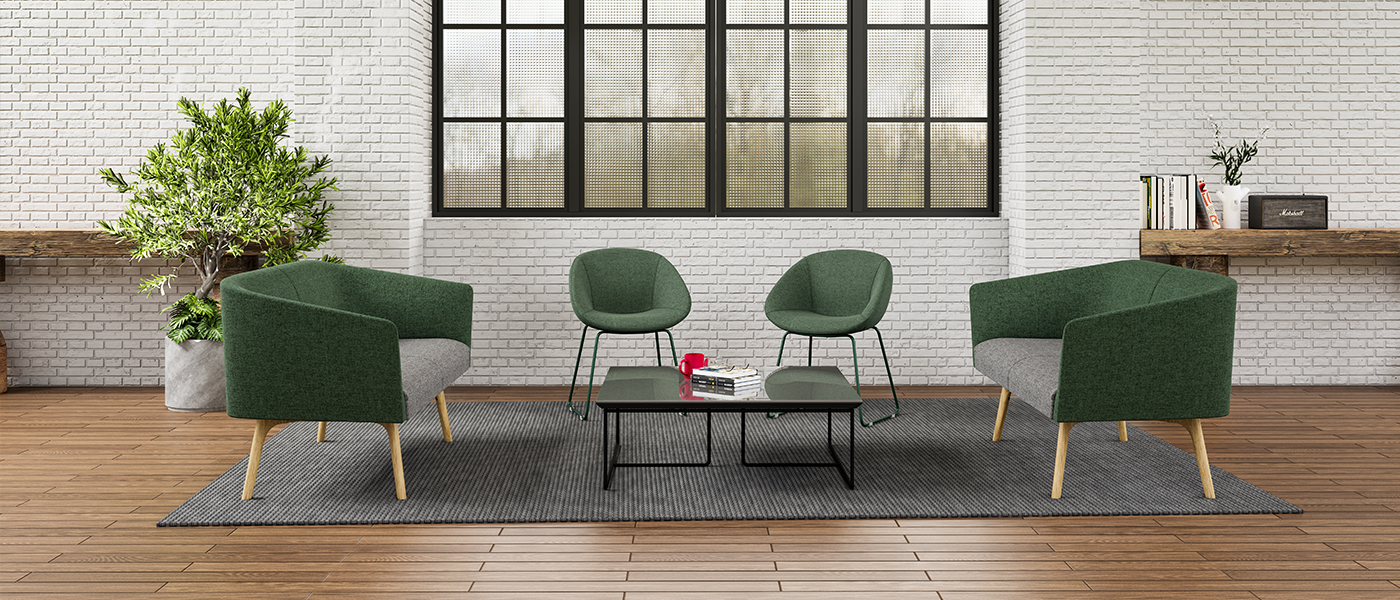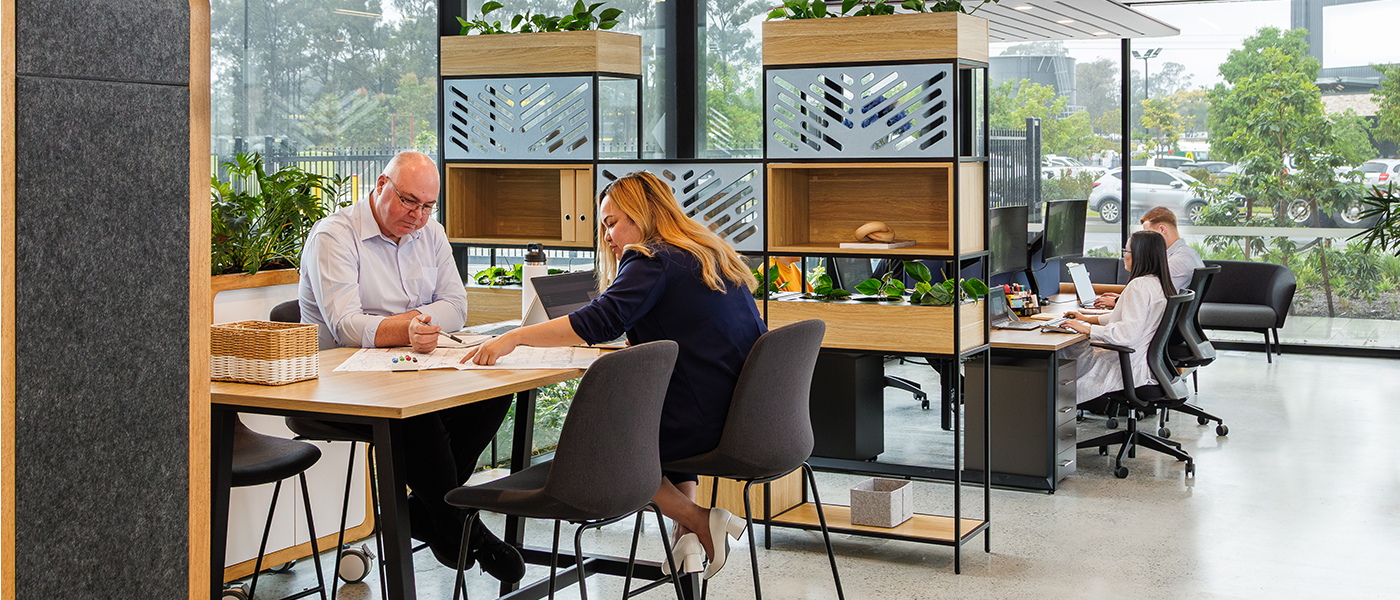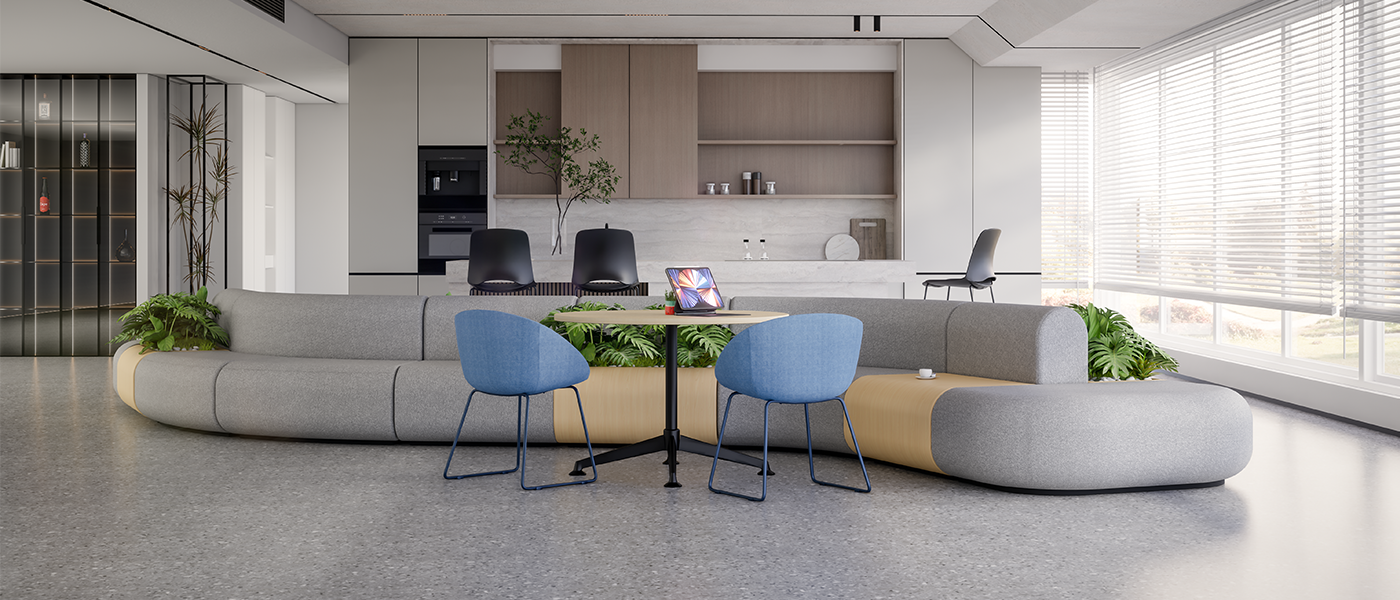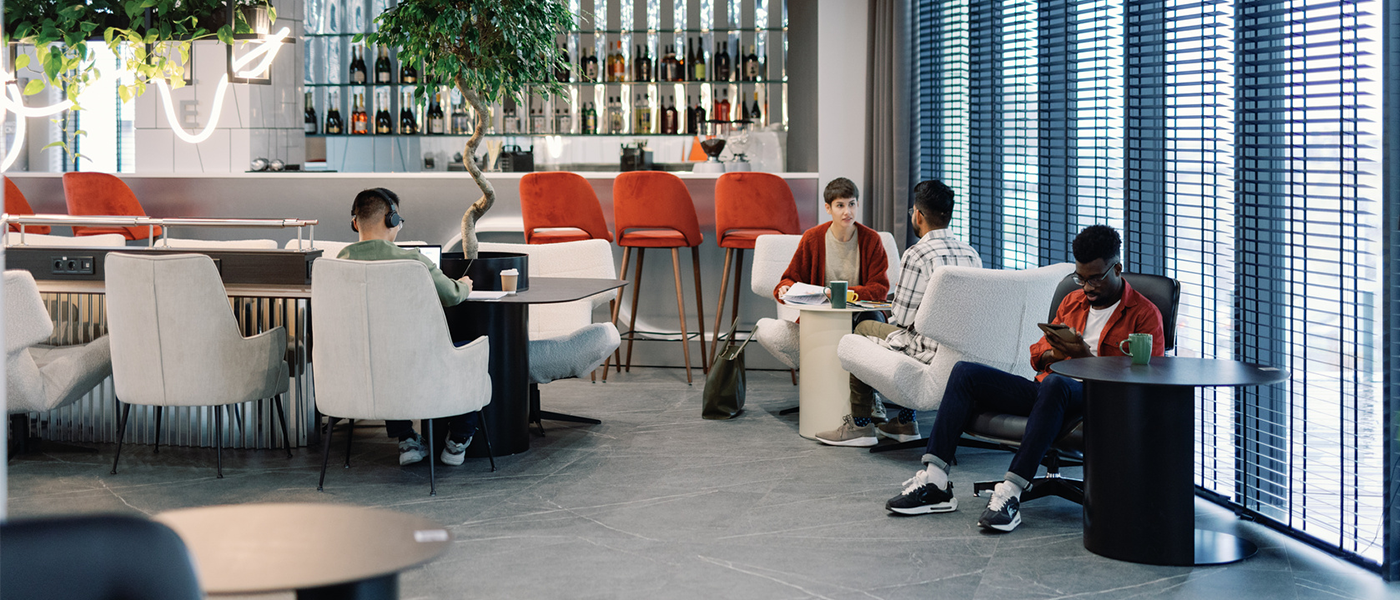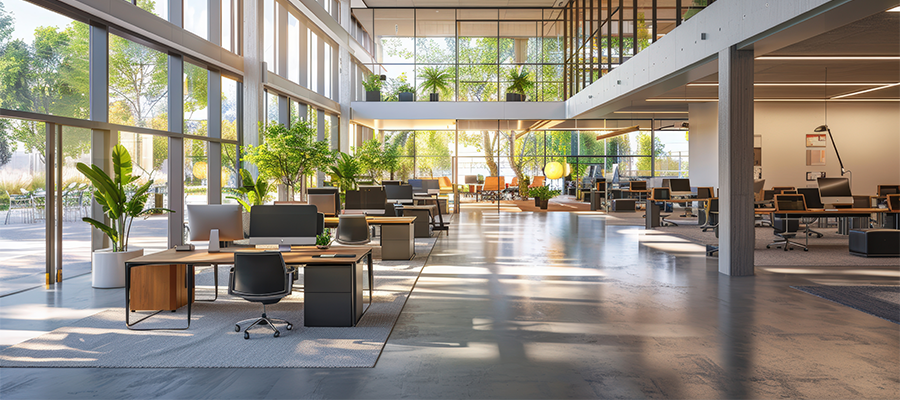Building Sustainable Workspaces:
The Role of Furniture in Greener Office Fitouts
written by OLG
In today’s commercial landscape, sustainability is more than a design trend, it’s a responsibility. Organisations are under increasing pressure to meet environmental, social, and governance (ESG) goals while creating workspaces that attract and retain talent. At the centre of every fit-out lies furniture, and as a commercial furniture supplier and manufacturer, we see every day how the right product choices can help shape a more sustainable future for Australian workplaces.
Setting the benchmark for sustainable fitouts
Australia leads the way in sustainable building standards. Green Star, Interiors, developed by the Green Building Council of Australia (GBCA), is the national benchmark for sustainable fitouts, guiding decisions on energy, materials, indoor environment quality and waste management (Green Building Council of Australia, 2023). Similarly, NABERS (the National Australian Built Environment Rating System) provides independent ratings for energy, water, waste and indoor environment performance, offering transparency and accountability for office tenancies (NABERS, 2024).
Together, these frameworks set a clear direction: workplaces must reduce their environmental impact, prioritise occupant wellbeing, and design for longevity. Furniture plays a critical role in achieving all three.
Where furniture makes the difference
Sustainable furniture starts with what it’s made from. The GBCA encourages fit-outs to use products with recycled content, FSC-certified timber, and Environmental Product Declarations (EPDs), which provide transparency around embodied carbon and lifecycle impact (GBCA, 2023). Designing products to be modular, repairable and reconfigurable also keeps them in circulation for longer, reducing demand for new resources and cutting waste.
Employees spend about a third of their lives at work, and the quality of the indoor environment is central to health and productivity. Furniture contributes directly: certified low-VOC finishes and adhesives improve air quality, acoustic seating and panels enhance soundscapes, and ergonomic designs support wellbeing (NABERS, 2024). These choices align with NABERS Indoor Environment and Green Star IEQ credits, directly supporting higher certification outcomes.
The environmental footprint of furniture extends well beyond manufacturing. A chair or desk that lasts a decade and carries a robust warranty prevents multiple replacements, minimises waste, and reduces the embodied carbon associated with frequent re-buying. As a manufacturer, we see durability as one of the most practical forms of sustainability.
Where furniture makes an impact
Task chairs: durability and ergonomics
Task chairs are among the most intensively used items in any office. Selecting chairs with robust commercial-grade construction, replaceable components, and long warranties extends their lifecycle, minimising waste. Ergonomic designs also support staff comfort and wellbeing, aligning with NABERS Indoor Environment measures. For us, durability isn’t just a guarantee — it’s a form of sustainability, ensuring fewer chairs end up in landfill.
Desking: modularity and flexibility
Hybrid working means offices need to adapt quickly. Our modular desking systems are designed for easy reconfiguration and future expansion, reducing the need for demolition or new product purchases. By manufacturing with low-VOC finishes and sustainably sourced materials, desking solutions also contribute to Green Star credits for both materials and indoor environmental quality.
Soft seating: materials and wellbeing
Soft seating shapes the look and feel of collaborative areas, but it also influences sustainability outcomes. Upholstered products specified with low-VOC foams, recycled fabrics, and certified timbers enhance air quality while reducing embodied carbon. Acoustic performance, comfort, and durability mean these pieces support both wellbeing and long-term performance.
Our responsibility as a manufacturer
Sustainability doesn’t stop at compliance, it’s embedded in how we design, source, and support. For us, that means:
- Designing for longevity: creating furniture that is durable, modular, and reconfigurable.
- Material stewardship: prioritising certified, low-impact materials with documented provenance.
- Supporting certification: ensuring our products align with Green Star Interiors and NABERS benchmarks, helping clients achieve their sustainability goals.
- Closing the loop: offering pathways for reuse, refurbishment, or recycling at the end of a product’s life.
Why it matters
For organisations, sustainable fitouts are a pathway to lower operating costs, healthier workplaces, and stronger ESG reporting. For employees, they create spaces that feel safe, inspiring, and future-ready. And for us as a manufacturer, it’s an opportunity to partner with clients not only to furnish spaces, but to help build workplaces that contribute positively to people and planet.
Because in the modern office, furniture isn’t just about how it looks or feels, it’s about how it performs for the environment, for people, and for the future.
Click to download a printable PDF.
